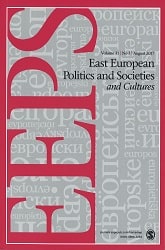Estonia: Visible Inequalities, Silenced Class Relations
Estonia: Visible Inequalities, Silenced Class Relations
Author(s): Jelena Helemäe, Ellu SaarSubject(s): Political history, Government/Political systems, Culture and social structure , Social differentiation, Transformation Period (1990 - 2010), Post-Communist Transformation
Published by: SAGE Publications Ltd
Keywords: class; inequality; postcommunism; Estonia;
Summary/Abstract: In postcommunist Estonia, the topic of inequality was considered “embarrassing.” The dominant popular assumption was that inequalities just happen naturally. Class and inequality discourse was effectively marginalized due to long-lasting success in focusing attention on nationalizing issues. A “transition culture” that lionized the capitalist future has also contributed to the marginalization of class discourse. Because of this marginalization, and the power of national/ethnic discourse and transitional culture, those most economically vulnerable were deprived of the cultural and discursive resources to resist the most extreme market-oriented policies. Sociologists did discuss inequality more seriously, but mostly according to a gradational and functional stratification paradigm: the central focus has been on individual attributes that divide people into classes. The analysis focusing on relations of exploitation and domination have been virtually absent in postcommunist Estonia. We conclude that the main challenge for Estonian social science is to incorporate concepts of power, exploitation, and domination perspective into study of inequality.
Journal: East European Politics and Societies
- Issue Year: 29/2015
- Issue No: 03
- Page Range: 565-576
- Page Count: 12
- Language: English
- Content File-PDF

